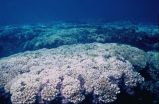(Press-News.org) DURHAM, NC -- Reproducing a rare type of B cell in the laboratory and infusing it back into the body may provide an effective treatment for severe autoimmune diseases such as multiple sclerosis or rheumatoid arthritis, according to researchers at Duke University Medical Center.
The findings, which were demonstrated in mice, highlight the unique properties of a subset of B cells that normally controls immune responses and limits autoimmunity, in which an organism mistakenly attacks its own healthy tissue. The work appears Oct. 14, 2012, in the journal Nature.
B cells are the component of the immune system that creates antibodies, which fight pathogens like bacteria and viruses. However, a small subset of B cells, called regulatory B cells, works to suppress immune responses. These B cells are characterized by a cell-signaling protein called interleukin-10 (IL-10), giving these regulatory B cells the name B10 cells.
While B10 cells are small in number, they are important for controlling inflammation and autoimmunity. B10 cells can also limit normal immune responses during infections, reducing inadvertent damage to healthy body tissue.
"Regulatory B cells are a fairly new finding that we're just beginning to understand," said Thomas F. Tedder, PhD, professor of immunology at Duke and study author. "B10 cells are important because they make sure an immune response doesn't get carried away, resulting in autoimmunity or pathology. This study shows for the first time that there is a highly controlled process that determines when and where these cells produce IL-10."
Tedder and his colleagues studied the process of IL-10 production in the B10 cells of mice. Creating IL-10 requires physical interactions between B10 cells and T cells, which play a role in turning on the immune system.
The researchers found that B10 cells only respond to very specific antigens. Recognizing these antigens drives the function of B10 cells, causing them to turn off certain T cells when they bind the same antigen to prevent them from harming healthy tissue.
With this understanding of B10 cells, researchers set out to learn whether B10 cells could be harnessed as a cellular therapy, given their ability to regulate immune responses and autoimmunity.
"Since B10 cells are extremely rare, it was important that we find a feasible solution to reproduce these cells outside the body to make them available," Tedder said.
The researchers learned that the B10 cells could be isolated from the body and would maintain their ability to regulate immune responses. Moreover, they could be reproduced in large numbers.
"Normal B cells usually die quickly when cultured, but we have learned how to expand their numbers by about 25,000-fold. However, the rare B10 cells in the cultures expand their numbers by four-million-fold, which is remarkable. Now, we can take the B10 cells from one mouse and increase them in culture over nine days to where we can effectively treat 8,000 mice with autoimmune disease," said Tedder.
When a small amount of B10 cells were introduced into mice with multiple sclerosis-like autoimmune disease, their symptoms were significantly reduced, essentially turning off the disease.
"B10 cells will only shut off what they are programmed to shut off. If you have rheumatoid arthritis, you would want cells that would only go after your rheumatoid arthritis," continued Tedder. "This research shows that we may have the potential to unharness regulatory cells, make millions of copies, and introduce them back into someone with autoimmune disease to shut down the disease. This may also treat transplanted organ rejection."
Additional research is needed to learn how to expand human B10 cells and determine how B10 cells behave in humans, building on the study's insights into the mechanisms behind their function and autoimmunity.
"Autoimmune diseases are very complicated, so creating a single therapy that allows us to go after multiple disease targets without causing immunosuppression has proven to be difficult." Tedder said. "Here, we're hoping to take what Mother Nature has already created, improve on it by expanding the cells outside of the body, and then put them back in to let Mother Nature go back to work."
### In addition to Tedder, Duke study authors include Ayumi Yoshizaki, Tomomitsu Miyagaki, David J. DiLillo, Takashi Matsushita, Mayuka Horikawa, Evgueni I. Kountikov, and Jonathan C. Poe. Rosanne Spolski and Warren J. Leonard contributed to this study from the National Heart, Lung, and Blood Institute, National Institutes of Health.
The research was supported by grants from the National Institutes of Health (AI56363 and AI057157), the Lymphoma Research Foundation, and the Division of Intramural Research, National Heart, Lung, and Blood Institute, NIH.
Rare cells regulate immune responses; May offer novel treatment for autoimmune diseases
2012-10-15
ELSE PRESS RELEASES FROM THIS DATE:
Research shows legume trees can fertilize and stabilize maize fields, generate higher yields
2012-10-15
Michelle Geis
mgeis@burnesscommunications.com
301-280-5712
Burness Communications
Wambui Kamiru
w.kamiru@cgiar.org
254-724-623-016
CGIAR
Research shows legume trees can fertilize and stabilize maize fields, generate higher yields
Africa's first long-term study finds legume trees planted alongside maize, combined with less fertilizer, is best solution for Africa's most important food crop
NAIROBI, KENYA (15 October 2012)—Inserting rows of "fertilizer trees" into maize fields, known as agroforestry, can help farmers across sub-Saharan Africa cope with ...
Report reveals key concerns of UK's aging society
2012-10-15
One in six people in England aged over 50 are socially isolated. They have few socially orientated hobbies, little civic or cultural engagement with society, and may have very limited social networks. This was a key finding from the most recent report of the English Longitudinal Study of Ageing (ELSA), a comprehensive study that aims to understand the economic, social, psychological and health concerns of an ageing society. The multidisciplinary ELSA research team showed that the least wealthy over-fifties suffer the most social isolation, with the wealthier over 50's half ...
Adding up autism risks
2012-10-15
The causes of autism and autism spectrum disorder (ASD) are complex, and contain elements of both nature (genes) and the environment. New research published in BioMed Central's open access journal Molecular Autism shows that common genetic polymorphisms (genetic variation) can add up to an increased risk of ASD.
The contribution of inheritance and genetic mutation versus environmental factors to the risk of ASD is hotly debated. Most twin studies show the contribution heavily tilted toward inheritance, but the exact amount of involvement of genes in ASD risk is less apparent. ...
Making a layer cake with atomic precision
2012-10-15
In a report published in Nature Physics, a group led Dr Leonid Ponomarenko and Nobel prize-winner Professor Andre Geim has assembled individual atomic layers on top of each other in a desired sequence.
The team used individual one-atom-thick crystals to construct a multilayer cake that works as a nanoscale electric transformer.
Graphene, isolated for the first time at The University of Manchester in 2004, has the potential to revolutionise diverse applications from smartphones and ultrafast broadband to drug delivery and computer chips.
It has the potential to replace ...
Breakthrough could help sufferers of fatal lung disease
2012-10-15
Pioneering research conducted by the University of Sheffield is paving the way for new treatments which could benefit patients suffering from the fatal lung disease pulmonary arterial hypertension (PAH).
For the first time scientists have found an antibody treatment that not only stops PAH getting worse, but also reverses the condition in mice and rats. The research was funded by the British Heart Foundation and the Medical Research Council (MRC) and is published in the Journal of Experimental Medicine.
PAH – high pressure in the blood vessels supplying the lungs – ...
Applied physics as art
2012-10-15
Cambridge, Mass. – October 14, 2012 – In Harvard's Pierce Hall, the surface of a small germanium-coated gold sheet shines vividly in crimson. A centimeter to the right, where the same metallic coating is literally only about 20 atoms thicker, the surface is a dark blue, almost black. The colors form the logo of the Harvard School of Engineering and Applied Sciences (SEAS), where researchers have demonstrated a new way to customize the color of metal surfaces by exploiting a completely overlooked optical phenomenon.
For centuries it was thought that thin-film interference ...
Too much of a good thing can be bad for corals
2012-10-15
MIAMI -- A new study by scientists at the University of Miami (UM) Rosenstiel School of Marine & Atmospheric Science shows that corals may be more severely impacted by climate warming when they contain too many symbiotic algae. The single-celled algae living inside corals are usually the key to coral success, providing the energy needed to build massive reef frameworks. However, when temperatures become too warm, these algae are expelled from corals during episodes of coral 'bleaching' that can lead to widespread death of corals. Until now, it was thought that corals with ...
Solar wind particles likely source of water locked inside lunar soils
2012-10-15
ANN ARBOR—The most likely source of the water locked inside soils on the moon's surface is the constant stream of charged particles from the sun known as the solar wind, a University of Michigan researcher and his colleagues have concluded.
Over the last five years, spacecraft observations and new lab measurements of Apollo lunar samples have overturned the long-held belief that the moon is bone-dry.
In 2009, NASA's Lunar Crater Observation and Sensing satellite, known as LCROSS, slammed into a permanently shadowed lunar crater and ejected a plume of material that was ...
Researchers present new targets for treating depression at Neuroscience Annual Meeting
2012-10-15
Researchers from Mount Sinai School of Medicine are presenting important discoveries on the involvement of the immune system and dopamine cells in the onset of depression at Neuroscience 2012, the Society for Neuroscience's 42nd annual meeting on October 13 -17 in New Orleans, and are available for interviews.
In addition to scientists presenting at the conference, Dennis S. Charney, MD, Anne and Joel Ehrenkranz Dean, Mount Sinai School of Medicine, Executive Vice President for Academic Affairs, The Mount Sinai Medical Center, is available to speak about depression ...
HPV vaccination not associated with increased sexual activity among girls
2012-10-15
ATLANTA, October 15, 2012 – The human papillomavirus (HPV) vaccine known as Gardasil is not associated with an increase in pregnancy, sexually transmitted infections, or contraceptive counseling, according to a Kaiser Permanente study published online today in the journal Pediatrics.
Since 2006, the Centers for Disease Control and Prevention has recommended that girls ages 11 receive three doses of the vaccine to protect them from HPV, which is transmitted through sexual activity and can cause genital warts and cervical, penile, vaginal, and head and neck cancers. The ...

